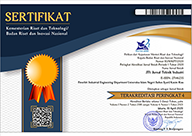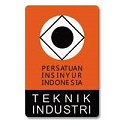A Review of the Application of Decision Tree Analysis and Artificial Neural Networks in Project Management
Abstract
The advancement of computing and communication technologies has fueled the growth of Information Technology (IT), with Artificial Intelligence (AI) emerging as a transformative force in modernizing project management practices. This study explores the application of two prominent AI techniques—Decision Tree Analysis (DTA) and Artificial Neural Networks (ANN)—in improving project planning and control. A review of empirical studies highlights the limitations of conventional tools such as Gantt charts and the Critical Path Method (CPM) in managing complex project variables, often resulting in cost overruns and schedule delays. In contrast, DTA and ANN demonstrate superior predictive accuracy, decision support, and adaptability capabilities. DTA offers transparent and structured decision-making models, while ANN excels in pattern recognition and outcome forecasting. The findings underscore that integrating these AI tools enhances project efficiency, cost estimation, and time management, establishing AI as a critical asset for future project success.
Keywords: Artificial Intelligence, Decision Tree Analysis, Artificial Neural Networks, Project Planning, Project Control
Full Text:
PDFReferences
M. Jain and K. K. Pathak, “Applications of artificial neural network in construction engineering and management-a review,” Int. J. Eng. Technol. Manag. Appl. Sci., vol. 2, no. 3, pp. 134–142, 2014.
S. B. Kotsiantis, “Decision trees: a recent overview,” Artif. Intell. Rev.., vol. 39, pp. 261–283, 2013.
S. Van Den Elzen and J. J. VanWijk, “Baobabview: Interactive construction and analysis of decision trees,” in 2011 IEEE conference on visual analytics science and technology (VAST), IEEE, 2011, pp. 151–160.
P.Yariyan et al., “Improvement of best first decision trees using bagging and dagging ensembles for flood probability mapping,” Water Resour. Manag., vol. 34, pp. 3037–3053, 2020.
J.Li, O.Moselhi, andS.Alkass, “Forecasting project status by using fuzzy logic,” J. Constr. Eng. Manag., vol. 132, no. 11, pp. 1193–1202, 2006.
Y. Peng and X. Zhang, “Integrative data mining in systems biology: from text to network mining,” Artificial Intelligence in Medicine, vol. 41, no. 2. Elsevier, pp. 83–86, 2007.
A. Darwiche and P. Marquis, “A knowledge compilation map,” J. Artif. Intell. Res., vol. 17, pp. 229–264, 2002.
Y. Raptodimos and I. Lazakis, “Fault tree analysis and artificial neural network modelling for establishing a predictive ship machinery maintenance methodology,” in Smart Ship Technology 2017, Royal Institution of Naval Architects, 2017.
S. H. Iranmanesh and M.Zarezadeh, “Application of artificial neural network to forecast actual cost of a project to improve earned value management system,” in World congress on science, engineering and technology, 2008, pp. 240–243.
R.Kaur and A.Singh, “Fuzzy logic: an overview of different application areas,” Adv. Appl. Math. Sci., vol. 18, no. 8, pp. 677–689, 2019.
U. Straccia, “Reasoning within fuzzy description logics,” J. Artif. Intell. Res., vol. 14, pp. 137–166, 2001.
F. T. Dweiri and M. M. Kablan, “Using fuzzy decision making for evaluating the project management internal efficiency,” Decis. Support Syst., vol. 42, no. 2, pp. 712–726, 2006.
S. Mirjalili, “Evolutionary algorithms and neural networks,” Stud. Comput. Intell., vol. 780, no. 1, pp. 43–53, 2019.
F.Reyes, N.Cerpa, A.Candia-Véjar, andM.Bardeen, “The optimization of success probability for software projects using genetic algorithms,” J. Syst. Softw., vol. 84, no. 5, pp. 775–785, 2011.
J. R.Montoya-Torres, E.Gutierrez-Franco, andC.Pirachicán-Mayorga, “Project scheduling with limited resources using a genetic algorithm,” Int. J. Proj. Manag., vol. 28, no. 6, pp. 619–628, 2010.
J.Huang, X.Wang, andR.Chen, “Genetic Algorithms for Optimization of Resource Allocation in Large Scale Construction Project Management,” J. Comput., vol. 5, no. 12, pp. 1916–1924, 2010.
S. Kaiafa and A. P. Chassiakos, “A genetic algorithm for optimal resource-driven project scheduling,” Procedia Eng., vol. 123, pp. 260–267, 2015.
Ö. H. Bettemir and R. Sonmez, “Hybrid genetic algorithm with simulated annealing for resource-constrained project scheduling,” J. Manag. Eng., vol. 31, no. 5, p. 4014082, 2015.
W. E. Halal, “Artificial intelligence is almost here,” Horiz., vol. 11, no. 2, pp. 37–38, 2003.
F. F. Agusalim, “Artificial Intelligence Solutions In Managing HSE Risks and Incidents,” 2023 International Conference on Digital Applications, Transformation and Economy, ICDATE 2023. 2023. doi: 10.1109/ICDATE58146.2023.10248441.
J.Miguel Castillo, C.Cortes, J.Gonzalez, andA.Benito, “Prospecting the future with AI,” 2009.
T.Eiter, W.Faber, N.Leone, G.Pfeifer, andA.Polleres, “Answer set planning under action costs,” J. Artif. Intell. Res., vol. 19, pp. 25–71, 2003.
P. Stone, R. E. Schapire, M. L. Littman, J. A. Csirik, and D. McAllester, “Decision-theoretic bidding based on learned density models in simultaneous, interacting auctions,” J. Artif. Intell. Res., vol. 19, pp. 209–242, 2003.
C. H. Go, “Moving Towards Automation and Artificial Intelligence in Managing HSE Risks and Incidents,” Society of Petroleum Engineers - ADIPEC, ADIP 2023. 2023. doi: 10.2118/216290-MS.
V. Novin, “Development of HSE management system model and its application in sustainable development planning, based on artificial intelligence,” Int. J. Environ. Sci. Technol., vol. 19, no. 10, pp. 9655–9668, 2022, doi: 10.1007/s13762-022-04164-1.
T. V. Fridgeirsson, H. T. Ingason, H. I. Jonasson, and H. Jonsdottir, “An authoritative study on the near future effect of artificial intelligence on project management knowledge areas,” Sustainability, vol. 13, no. 4, p. 2345, 2021.
S. Ong and S. Uddin, “Data science and artificial intelligence in project management: the past, present and future,” J. Mod. Proj. Manag., vol. 7, no. 4, 2020.
M. R. Davahli, “The last state of artificial intelligence in project management,” arXiv Prepr. arXiv2012.12262, 2020.
P.Hofmann, J.Jöhnk, D.Protschky, andN.Urbach, “Developing Purposeful AI Use Cases-A Structured Method and Its Application in Project Management,” in Wirtschaftsinformatik (Zentrale Tracks), 2020, pp. 33–49.
A. P.Kinanthi, D.Herlina, andF. A.Mahardika, “Analisis Pengendalian Persediaan Bahan Baku Menggunakan Metode Min-Max (Studi Kasus PT.Djitoe Indonesia Tobacco),” PERFORMA Media Ilm. Tek. Ind., vol. 15, no. 2, pp. 87–92, 2016, doi: 10.20961/performa.15.2.9824.
J. M. Castillo, “A crystal ball made of agents,” 2010.
S. A. Oke, “A literature review on artificial intelligence,” Int. J. Inf. Manag. Sci., vol. 19, no. 4, pp. 535–570, 2008.
F. N. D.Piraquive, V. H. M.García, andR. G. Crespo, “Knowledge management model for project management,” in International Conference on Knowledge Management in Organizations, Springer, 2015, pp. 235–247.
K. H. David and L. J. Shen, “Constraint modeling and buffer management with integrated production scheduler,” in 9th Annual Conference of the International Group for Lean Construction, Citeseer, 2001.
I.Saidu and W. Shakantu, “An investigation into cost overruns for ongoing building projects in Abuja, Nigeria,” Acta Structilia, vol. 24, no. 1, pp. 53–72, 2017.
A. O.Ogunde, O.Olaolu, A.Afolabi, J.Owolabi, andR.Ojelabi, “Challenges confronting construction project management system for sustainable construction in developing countries: Professionals' perspectives (a case study of Nigeria),” J. Build. Perform. ISSN, vol. 8, no. 1, p. 2017, 2017.
A. C. Ikechukwu, I. E. Fidelis, and O. A. Kelvin, “Causes and Effects of Cost Overruns in Public Building Construction Projects Delivery, In Imo State, Nigeria,” IOSR J. Bus. Manag, vol. 19, no. 07, pp. 13–20, 2017.
O. L.Okore, E. O. P.Akpan, andB.Amade, “An Investigation of the Effects of Cost Overrun Factors on Project Delivery Methods in Nigeria.” PM World J., vol. 6, no. 2, 2017.
T.Subramani, P. S.Sruthi, andM.Kavitha, “Causes of cost overrun in construction,” IOSR J. Eng., vol. 4, no. 6, pp. 1–7, 2014.
M. A. Kasimu, “Significant factors that cause cost overruns in building construction projects in Nigeria,” Interdiscip. J. Contemp. Res. Bus., vol. 3, no. 11, pp. 775–780, 2012.
D.Arditi, G. T.Akan, andS.Gurdamar, “Reasons for delays in public projects in Turkey,” Constr. Manag. Econ., vol. 3, no. 2, pp. 171–181, 1985.
P. A. Koushki, K. Al-Rashid, and N. Kartam, “Delays and cost increases in the construction of private residential projects in Kuwait,” Constr. Manag. Econ., vol. 23, no. 3, pp. 285–294, 2005.
Y. Frimpong, J. Oluwoye, and L. Crawford, “Causes of delay and cost overruns in construction of groundwater projects in a developing country; Ghana as a case study,” Int. J. Proj. Manag., vol. 21, no. 5, pp. 321–326, 2003.
R. Discenza and J. B. Forman, “Seven causes of project failure: how to recognize them and initiate project recovery,” in PMI® Global Congress, 2007, p. 2007.
O. K. Akande et al., “Evaluation of Failures in Public Project Management Practices in Minna, Nigeria,” 2018.
M. Rogalska and Z. Hejducki, “Time buffers in construction process scheduling,” J. Civ. Eng. Manag., vol. 13, no. 2, pp. 143–148, 2007.
H. Kerzner, “The Future of Project Management: By The Importance of Recognizing Change,” 2013.
R. F. Cox, “Key elements to successful international collaboration in construction project delivery,” in The proceedings of The International Conference of Construction and Real Estate Management, 2009, pp. 1420–1425.
I.Hyväri, “Success of projects in different organizational conditions,” Proj. Manag. J., vol. 37, no. 4, pp. 31–41, 2006.
T. Cooke-Davies, “The ‘real’ success factors on projects,” Int. J. Proj. Manag., vol. 20, no. 3, pp. 185–190, 2002.
A. Borbida, “Artificial Intelligence & Project Management,” 2021.
M.Syazwan Ab Talib andA.Bakar Abdul Hamid, “Halal logistics in Malaysia: a SWOT analysis,” J. Islam. Mark, vol. 5, no. 3, pp. 322–343, 2014.
A. Alshaikhi and M. Khayyat, “An investigation into the Impact of Artificial Intelligence on the Future of Project Management,” in 2021 International Conference of Women in Data Science at Taif University (WIDSTAIF), IEEE, 2021, pp. 1–4.
C. W. Olanow, R. L. Watts, and W. C. Koller, “An algorithm (decision tree) for the management of Parkinson’s disease (2001): Treatment Guidelines,” Neurology, vol. 56, no. suppl 5, pp. S1–S88, 2001.
F. T.Anbari, E. G.Carayannis, andR. J. Voetsch, “Post-project reviews as a key project management competence,” Technovation, vol. 28, no. 10, pp. 633–643, 2008.
H. N.Ahuja, S. P.Dozzi, andS. M. Abourizk, Project management: techniques in planning and controlling construction projects. John Wiley & Sons, 1994.
R. Pellerin and N. Perrier, “A review of methods, techniques and tools for project planning and control,” Int. J. Prod. Res., vol. 57, no. 7, pp. 2160–2178, 2019.
H. Kerzner, Project management metrics, KPIs, and dashboards: a guide to measuring and monitoring project performance. John wiley & sons, 2023.
R. McKeeman, “Early warning signs of project failure,” Rep. Univ. North Texas Inf. Syst. Res. Cent., 2001.
J. Hinze, Construction planning and scheduling. Pearson Education, 2012.
P.Jaśkowski andA.Sobotka, “Scheduling construction projects with resources accessibility limited and changeable in time,” J. Civ. Eng. Manag., vol. 10, no. 4, pp. 267–276, 2004.
K. Shiruru, “An Introduction To Artificial Neural Networks, " Article in International Journal Of Advanced Research And Innovative Ideas In Education, 2016.
O. S. Eluyode and D. T. Akomolafe, “Comparative study of biological and artificial neural networks,” Eur. J. Appl. Eng. Sci. Res., vol. 2, no. 1, pp. 36–46, 2013.
M. Shukla and M. Abdelrahman, “Artificial neural networks based steady state security analysis of power systems,” in Thirty-Sixth Southeastern Symposium on System Theory, 2004. Proceedings of the IEEE, 2004, pp. 266–269.
M. Y.Rafiq, G.Bugmann, andD. J. Easterbrook, “Neural network design for engineering applications,” Comput. Struct., vol. 79, no. 17, pp. 1541–1552, 2001.
H.Kukreja, N.Bharath, C. S.Siddesh, and S.Kuldeep, “An introduction to artificial neural network,” Int J Adv Res Innov Ideas Educ, vol. 1, no. 5, pp. 27–30, 2016.
K. C.Arnold, K. Z.Gajos, andA. T. Kalai, “On suggesting phrases vs. predicting words for mobile text composition,” in Proceedings of the 29th Annual Symposium on User Interface Software and Technology, 2016, pp. 603–608.
E. Brynjolfsson and T. Mitchell, “What can machine learning do? Workforce implications,” Science (80-. )., vol. 358, no. 6370, pp. 1530–1534, 2017.
L. Chen, Y. Zhao, J. Zhang, and J. Zou, “Automatic detection of alertness/drowsiness from physiological signals using wavelet-based nonlinear features and machine learning,” Expert Syst. Appl., vol. 42, no. 21, pp. 7344–7355, 2015.
K.Afsari, C. M.Eastman, andD. R. Shelden, “Cloud-based BIM data transmission: current status and challenges,” in ISARC. Proceedings of the International Symposium on Automation and Robotics in Construction, IAARC Publications, 2016, p. 1.
M. R. Bin Emdad, “Deep Learning is the Core Method of Machine Learning,” Int. J. Eng. Res. Technol., vol. 6, no. 2, pp. 52–54, 2017.
R. Chandra, K. Chaudhary, and A.Kumar, “The combination and comparison of neural networks with decision trees for wine classification,” Sch. Sci. Technol. Univ. Fiji, 2007.
P.Kaur, “Artificial Neural Networks as an effective project management tool,” Khalsa Coll. Women. Civ. Lines, Ludhiana, India, 2008
DOI: http://dx.doi.org/10.24014/jti.v11i1.16480
Refbacks
- There are currently no refbacks.
Copyright (c) 2025 Olusina Temidayo Akinyokun

This work is licensed under a Creative Commons Attribution-NonCommercial-ShareAlike 4.0 International License.
Jurnal Teknik Industri
P-ISSN 2460-898X | E-ISSN 2714-6235
Published by:
Industrial Engineering Department
Universitas Islam Negeri Sultan Syarif Kasim Riau, Indonesia
Office Address:
H.R. Soebrantas KM 15.5, Tampan, Pekanbaru, Riau, Indonesia 28293
email: jti.fst@uin-suska.ac.id
Indexed by:
JTI : Jurnal Teknik Industri under a Creative Commons Attribution-NonCommercial-ShareAlike 4.0 International License.

















